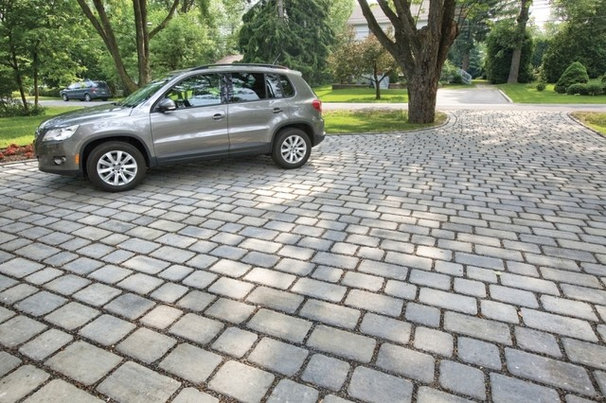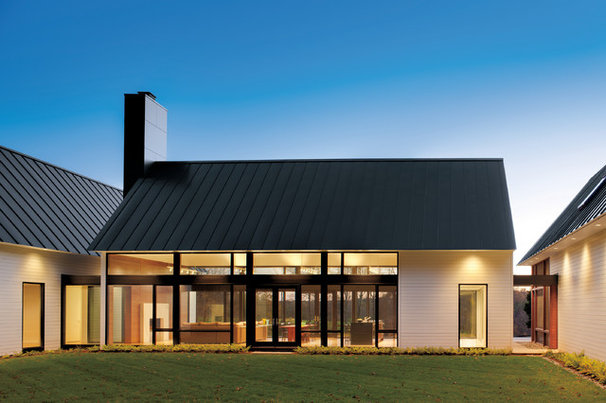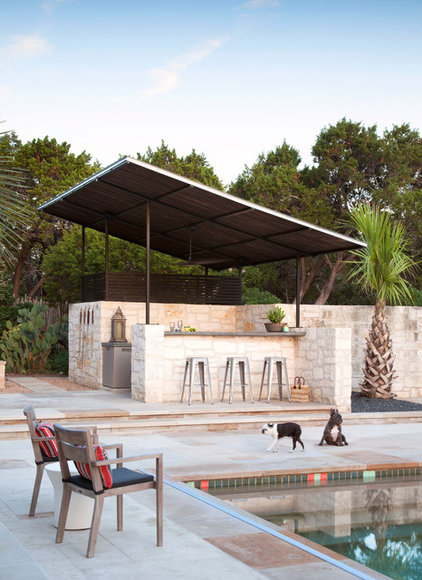Building Permits: What to Know About Green Building and Energy Codes
In Part 4 of our series examining the residential permit process, search we review typical green building and energy code requirements
Energy and green building codes exist, to varying degrees, in every U.S. building jurisdiction. Just as the main purpose of traditional building code is to ensure homeowner safety, green building and energy codes protect and nourish our environment and the world we share together. Here’s what to know about these codes and why we have them.
More in this series: When a Permit Is Required and When It’s Not | The Submittal Process | 10 Critical Code Requirements for Every Project
Green building codes reduce negative environmental impacts and encourage sustainable construction practices in our communities. In doing so they improve public health, safety and general welfare.
If your project requires a permit, it will need to adhere to the standards adopted by your community. These requirements will be understood by your design and building professionals, or can be explained to you by inspectors and plan checkers during the submittal process.
Green building codes set minimum standards for water consumption, air quality, toxicity of materials, building efficiency, general waste reduction and stormwater management related to your project.
Here in highly populated California, residents face droughts, smog, flooding and water pollution issues. These issues are shared by communities throughout the world. As our communities grow, these ever-evolving codes ensure the sustainability of that growth.
Water conservation measures include specific requirements for landscape designs and plumbing fixtures.
In the landscape shown here, synthetic grass creates a lush green surface with zero water usage. Note how the flagstones are cut into the path, helping give the turf a natural and organic appearance.
Some homeowner’s associations prohibit artificial turf. I used to roll my eyes at synthetic grass installations myself. But that sort of policy is difficult to justify today, with falling water tables, droughts and the improved look and durability of synthetic turf options.
An assortment of landscape requirements might be required for your project. Rain sensors connected to landscape irrigation in order to automatically shut off sprinklers in case of rain are a standard guideline. Plant selections prioritizing native plants, and square footage parameters for the landscaping area, are also usually regulated in some manner. These rules might feel restrictive at times, but jurisdictions must find ways to serve the water needs of growing populations while the water supply is stagnant, or in some cases, diminishing.
Stormwater management lessens pollution and flooding dangers in our communities.
In the area seen here, pervious pavers assist with runoff. Surfaces that are impervious, such as concrete patios, driveways and roofs, direct water to storm drains almost immediately, in contrast with natural landscapes, which typically serve as filtering sponges, absorbing much of the runoff and filtering the water before it joins streams and tributaries.
You might be affected by rules regulating the percentage of your property area that can utilize impervious surfaces as well as by requirements that water draining from those surfaces must be treated (naturally filtered) before being released to your community storm drain system.
Today we know better, and new stormwater management requirements exist to protect natural habitats. This is not only for the sake of those habitats but for the children who will rely on those habitats in the future.
Green building requirements regulate an assortment of potentially negative environmental impacts. The architect of the home in the photo shown here did a beautiful job of minimizing the home’s physical interaction with its natural sloping habitat. Rarely would a unique, thoughtful design like this be required, but there are circumstances in which it could be. Heritage trees and groves are sometimes protected by jurisdictions, and you can see how this minimized foundation alleviates a potentially devastating impact on the oak’s sensitive root structure.
You will have no choice but to follow some requirements, such as those related to the early demolition stages of a project. Any existing, potentially hazardous materials will need to be tested and mitigated. Specific conditions regulate air quality for workers, neighbors and future inhabitants. These relate to bath-fan air movement requirements, fireplace EPA ratings, heating and cooling system design rules, and regulations for various material characteristics (such as paint and carpet) commonly used throughout a home.
Like the green building codes, energy codes are becoming more comprehensive and prevalent with each passing year. They promote sustainable construction methods and designs to ensure that our homes are energy efficient. This has been determined by jurisdictions to be the most feasible strategy to ensure that the energy supply is available right now, while assisting the continuing effort to reduce greenhouse gases in our environment.
These regulations are in some cases a direct response to legislative mandates by elected officials. The mandates require a reduction in emissions that are suspected of impacting global warming.
The efficiency of windows, insulation, HVAC systems, lights and many other home features is regulated by the energy code. Your requirements will vary greatly depending on your geographic region and climate type, so you will need to rely on professional advice from your designer and contractor, or your plan checker and inspector.
For large jobs and new home construction, an energy consultant will probably be required to calculate the energy conformance of the project.
Energy code lighting requirements impose strict lighting efficiency guidelines for remodels and new construction. They typically require exterior light fixtures to be fluorescent or LED, or to use motion detectors for automatic shutoff.
Other lighting codes related to energy code include bathroom and kitchen specifications, which typically require some combination of integrated motion detectors or high-efficiency lighting types. One code revision in California requires garage lights to be installed with motion sensors, even when the light source is fluorescent.
Home heating and air conditioning are regulated in part by HVAC efficiency ratings and SEER (Seasonal Energy Efficiency Ratio) ratings, providing minimum requirements a home must adhere to. In some cases a HERS (Home Energy Rating System) rater is required to inspect the home and confirm efficiency conformance.
Insulation specifications also relate to this efficiency, and are regulated by specific requirements that vary depending on location. Your builder and design professional, or local jurisdiction if you’re doing the work yourself, should be able to communicate the specific requirements for your project.
The energy efficiency of your water heater depends on its equipment, design and operational control. Energy code provides minimum standards to heat and deliver hot water throughout a home, including guidelines regulating piping insulation characteristics as well as standards related to recirculating water pumps or on-demand water heating systems.
The code is intended to change over time, as innovations and efficiency capabilities accumulate and improve.
No matter what stance your jurisdiction takes, you have the option of adhering to beyond-code programs such as LEED or Energy Star, which can improve the energy efficiency and green building values of your home. These programs serve as ideals for an evolving industry that is attempting to preserve our environment and the energy availability for this generation as well as future ones.



















Follow Us!